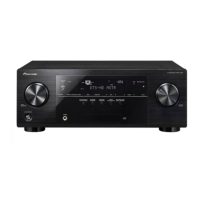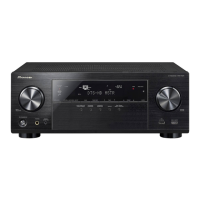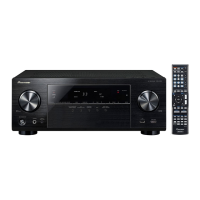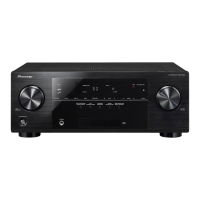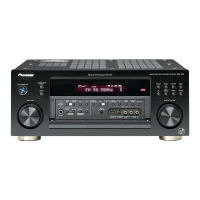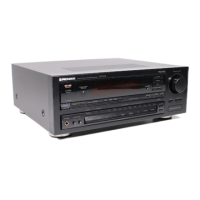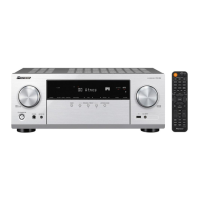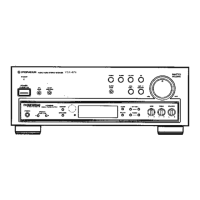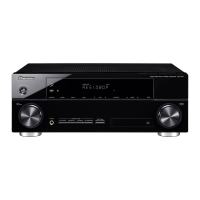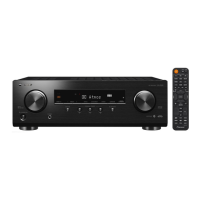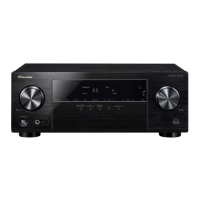
Do you have a question about the Pioneer VSX-1130-K and is the answer not in the manual?
| Receiver type | Surround |
|---|---|
| Output impedance | 6 Ω |
| Input sensitivity | 200 mV |
| Audio output channels | 7.2 channels |
| Audio A/D Converter (ADC) | 24-bit/96kHz |
| Signal-to-Noise Ratio (SNR) | 98 dB |
| Power output per channel (1KHz@8 Ohm) | 105 W |
| Power output per channel (20-20KHz@8 Ohm) | 150 W |
| HDMI in | 6 |
| Digital audio optical in | 1 |
| Ethernet LAN | Yes |
| Supported radio bands | AM, FM |
| Preset stations quantity | 63 |
| Internet radio services supported | vTuner |
| Optical drive included | No |
| Display | LCD |
| Product color | Black |
| Audio decoders | Dolby Digital Plus, DTS-ES |
| Apple docking compatibility | iPhone, iPod |
| AC input voltage | 220-230 V |
| AC input frequency | 50 - 60 Hz |
| Power consumption (standby) | 0.1 W |
| Power consumption (typical) | 550 W |
| Headphone connectivity | 3.5 mm |
| Connectivity technology | Wired |
| Depth | 362.5 mm |
|---|---|
| Width | 435 mm |
| Height | 168 mm |
| Weight | 9800 g |
Details audio and video capabilities including Dolby Atmos, Ultra HD, and HDMI features.
Lists all accessories included with the receiver to ensure nothing is missing.
Provides guidelines on where and how to safely install the AV receiver unit.
Instructions on how to insert batteries into the remote control for operation.
Explains the optimal conditions and limitations for remote control operation.
Details the layout and functions of the remote control for the VSX-1130 model.
Details the layout and functions of the remote control for the VSX-830 model.
Explains the meaning of various indicators and information shown on the receiver's display.
Describes the buttons, indicators, and jacks located on the front panel of the receiver.
Introduces the chapter on connecting various home theater components to the receiver.
Details the terminals and ports available on the rear panel of the VSX-1130 for connections.
Guides on determining speaker application, placement, and system configuration.
Explains audio connection types and the function of the video converter.
Details how to connect devices using HDMI, including ARC and Control with HDMI features.
Explains how to connect TVs and playback devices, including methods without HDMI.
Instructions for connecting the subwoofer and AM/FM antennas for optimal audio.
Guides on setting up multi-zone audio and connecting to a network via LAN.
Instructions for connecting iPods, USB devices, MHL devices, and HDMI components.
Final step of connecting the power cord and ensuring safe power-up.
Introduces the chapter on connecting various home theater components to the receiver.
Details the terminals and ports available on the rear panel of the VSX-830 for connections.
Guides on determining speaker application, placement, and system configuration.
Explains audio connection types and the function of the video converter.
Details how to connect devices using HDMI, including ARC features.
Explains how to connect TVs and playback devices, including methods without HDMI.
Instructions for connecting the subwoofer and AM/FM antennas for optimal audio.
Guides on connecting to network, iPods, USB devices, and MHL devices.
Final step of connecting the power cord and ensuring safe power-up.
Outlines the three methods for performing initial setup of the receiver.
Details using a smartphone/tablet app for initial connection and settings.
Explains using PC software for connection and initial setup of the receiver.
Guides on performing settings by referring to the main operating instructions.
Basic instructions for playing audio from various sources like DVD or home theater system.
Details playback of music and photo files from iPod and USB storage devices.
Instructions for playing audio and video content from MHL-enabled mobile devices.
Guides on tuning radio stations and playing music via Bluetooth wireless technology.
Explains how to use different listening modes for surround sound playback.
Guides on selecting MCACC presets and choosing input signals for optimal sound.
Details using Phase Control and Full Band Phase Control for better audio reproduction.
Overview of network features like Internet radio, PC music playback, Pandora, and Spotify.
Details on playing music from network components, Internet radio, and Spotify.
Information on how network playback behaves and potential issues.
Lists supported audio and photo file formats for network playback.
Explains the synchronized operation capabilities when using HDMI-compatible devices.
Steps for connecting components to enable synchronized operations via HDMI.
Configuration settings for Control, Control Mode, ARC, and Standby Through.
Details on synchronized operations and the automatic Sound Retriever Link function.
Important notes and precautions regarding the use of Control with HDMI.
Adjusts sound parameters like EQ, Phase Control, Bass, Treble, and DNR for optimal audio.
Configures video settings such as scaling and super resolution for enhanced picture quality.
Manages speaker output selection and HDMI signal output for 4K/60p.
Controls multi-zone audio output and network settings via web browser.
Manages sleep timer, display brightness, and checks overall system settings.
Restores all receiver settings to factory defaults for troubleshooting or setup changes.
Introduces the Remote Setup menu and its various functions for remote control customization.
Guides on operating multiple Pioneer receivers discretely with one remote.
Instructions for setting the remote to control other audio/video components using preset codes.
Details on programming new signals and erasing learned remote control settings.
Manages All Zone Standby and sets automatic switching time for receiver operation mode.
Resets all remote control settings to factory defaults for troubleshooting or re-setup.
Table showing remote control functions for various TV and audio/video components.
Describes how to access and navigate the MCACC PRO/Advanced MCACC menus for settings.
Guides through automatic speaker calibration for optimal surround sound.
Provides detailed manual adjustments for speaker levels, distances, and EQ.
Allows viewing calibrated speaker settings, levels, distances, and EQ data.
Options for renaming, copying, and clearing MCACC presets for different listening scenarios.
Guides on making receiver settings like Input, HDMI, speaker configuration, and OSD language.
Detailed manual adjustments for speaker size, crossover, and distance.
Configures MHL auto-switching and other system preferences like Auto Power Down.
Instructions for configuring network settings and updating firmware using Safari.
Addresses common issues and provides solutions for general operational problems.
Covers problems with power not turning on, sudden power off, and no sound output.
Troubleshoots common problems related to HDMI connectivity and network functions.
Solves problems with iPod, USB device recognition, and wireless LAN connectivity.
Provides details on Wi-Fi standards, certification marks, and the HDMI interface technology.
Information on iPod connectivity, Bluetooth technology, and Windows compatibility.
Explains Dolby and DTS surround sound technologies and playback behavior.
Guides on speaker positioning and important notes regarding HDMI connections.
Defines technical terms and lists the receiver's technical specifications.
A comprehensive list of preset codes for controlling various AV components with the remote.
